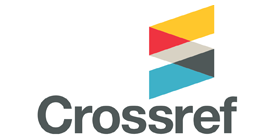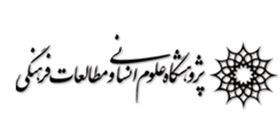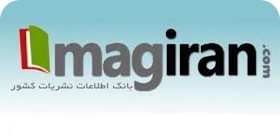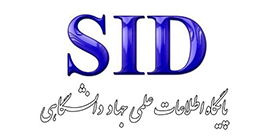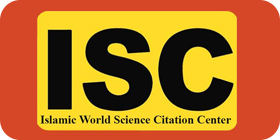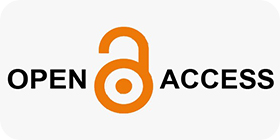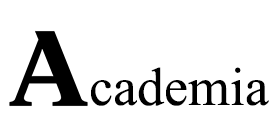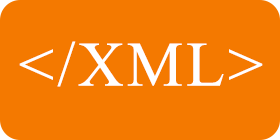Development of a Model for Student Sports Development in Iraq
Keywords:
sports development, student, IraqAbstract
Purpose: The aim of the present study is to develop a model for student sports development in the Republic of Iraq.
Methods and Materials: The study employed a descriptive–survey research design. The study population consisted of all physical education and sports experts working in the Ministry of Education of Iraq, as well as those in provincial, regional, and municipal education administrations, and physical education teachers. A purposive sampling procedure was utilized based on the criterion of an adequate sample size for structural equation modeling, yielding a total of 250 participants. Based on a comprehensive literature review, documentary analysis, and semi‐structured exploratory interviews, a researcher-developed questionnaire was constructed to assess the factors influencing student sports development. The questionnaire evaluated these factors across five dimensions: stakeholders, development strategies, development processes, development pathways, and development outcomes. Content validity of the instrument was confirmed by 15 experts in student sports, and its reliability coefficient was determined to be 0.89. The data were analyzed using descriptive statistics, inferential statistics, and structural equation modeling via partial least squares (PLS).
Findings: Comparative analysis of the factors influencing student sports development revealed that the development outcomes dimension held the highest priority, followed by development processes, development strategies, development pathways, and stakeholders. Model fit indices indicated that the structural model had an acceptable fit. According to the results, the stakeholders dimension influenced development strategies (β = 0.58). In addition, development strategies affected development processes (β = 0.76) and development outcomes (β = 0.35), while development processes influenced development pathways (β = 0.67) and development pathways, in turn, affected development outcomes (β = 0.30).
Conclusion: These findings suggest that policymakers and planners should consider stakeholders, development strategies, development processes, and development pathways when formulating policies and programs for student sports development.
Downloads
References
Bastami, A., Hadavi, S. F., & Ramezani Nejad, R. (2023). Strategies for the Development of Student Sports Based on Lifelong Learning and Sustainable Development. Studies in Physical Education and Student Health, 2(2), 67. https://www.jpeshs.com/article_183218.html
Burnett, C., Physical, E., & Recreation. (2020). Key findings of a national study on school sport and physical education in South African public schools. South African Journal for Research in Sport, Physical Education and Recreation, 42(3), 43-60. https://www.ajol.info/index.php/sajrs/article/view/202655/191138
Fanderski, J. (2016). Development of a School Sports Strategy in Golestan Province North University]. https://elmnet.ir/article/10960106-51591
Ghiabi, F., Esmaeili, M. R., & Ganjooee, F. A. (2023). Presenting a Comprehensive Model for Improving the Monitoring System in Sports Organizations with a Mixed Approach [Research Article]. Iranian Journal of Educational Sociology, 6(1), 178-188. https://doi.org/10.61186/ijes.6.1.178
Heydari Rad, P., Hamidi, M., Sajjadi, S. N., & Rajabi Noushabadi, H. (2023). Providing a Framework of Analyzing the Effective Factors on the Success of Small Businesses of Sports Service [Research Article]. Iranian Journal of Educational Sociology, 6(2), 97-111. https://doi.org/10.61186/ijes.6.2.97
Hosseini Koshtan, M., & Gholandar Ghochan Atigh, G. (2022). Prioritization of Indicators of Student Sports Development in Iran. Biannual Journal of Research in Educational Sports, 10(28). https://res.ssrc.ac.ir/article_2897.html
Jahan Tab Nejad, A. (2017). Analysis of the Factors Affecting the Development of Basic Sports in Elementary Schools in Ahvaz Shahid Chamran University of Ahvaz]. https://smrj.ssrc.ac.ir/article_1304.html
Manafi, F. (2015). Designing a Model for the Development of University Sports in Iran Faculty of Physical Education and Sports Science, University of Guilan]. https://elmnet.ir/article/10908791-77631
Motalebi Jazi, E. (2019). Relationship between the organizational structure of physical education of the ministry of education and the development of student sport Payame Noor University, Tehran]. https://civilica.com/doc/1649624/
Mozaffari, A. (2009). Description of the Implementation Status of Physical Education and Sports Lessons in the First Three Grades of Elementary Schools in the Country from the Perspective of Teachers and Principals. Journal of Motor Sciences and Sports, 7(14), 119-139. https://ssrc.ac.ir/file/download/page/1572772526-.pdf
Normand, M. P., & Burji, C. (2020). Using the Step it UP! Game to increase physical activity during physical‐education classes. Journal of Applied Behavior Analysis, 53(2), 1-9. https://doi.org/10.1002/jaba.624
Padash, D., & Kashef, M. (2021). Identifying the Uncertainties of Physical Education and Student Sports in the 1404 Horizon. Research in Educational Sports, 9(22), 47-74. https://res.ssrc.ac.ir/article_1824.html
Ramezani Nejad, R. (2003). Needs Assessment of Physical Education and Sports in the Country's Schools (Presenting a Model for Curriculum Planning). https://ensani.ir/fa/article/download/190708
Ramezani Nejad, R., & Niazi, S. M. (2019). Objectives, Standards and Content of Physical Education Lessons in Schools. Islamic Azad University. https://elmnet.ir/doc/704809-92257
Schulenkorf, N. (2017). Managing sport-for-development: Reflections and outlook. Sport Management Review, 20, 243-251. https://doi.org/10.1016/j.smr.2016.11.003
Shariati, U. (2017). Assessing the teaching status of physical education in girls' high schools in South Khorasan province Birjand University].
Downloads
Published
Submitted
Revised
Accepted
Issue
Section
License
Copyright (c) 2025 Mohammed Rahi Saadoon AlZaidawi, SEPIDEH Ghotnian, mohammed ibadi alkhafaji, Mahboobeh khodaparest (Author)

This work is licensed under a Creative Commons Attribution-NonCommercial 4.0 International License.




